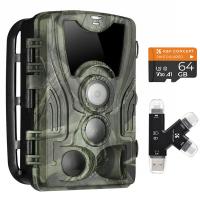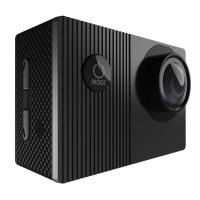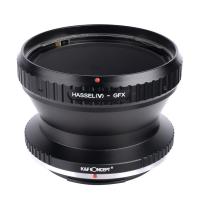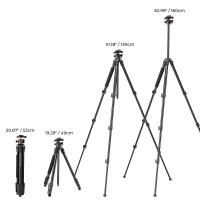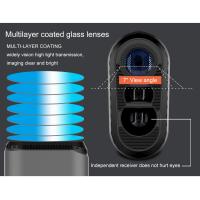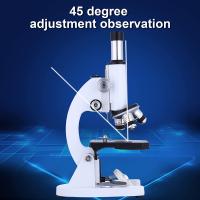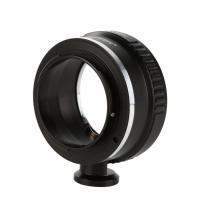How Does A Scanning Probe Microscope Work ?
A scanning probe microscope (SPM) works by using a tiny probe to scan the surface of a sample at a very close distance. The probe is typically made of a sharp tip, which can be as small as a single atom, and is attached to a cantilever. The cantilever is then moved across the surface of the sample, and the tip is used to measure various properties of the surface, such as its topography, magnetic or electrical properties, or chemical composition.
There are several types of SPMs, including atomic force microscopes (AFMs), scanning tunneling microscopes (STMs), and magnetic force microscopes (MFMs). Each type of SPM uses a slightly different method to measure the properties of the sample, but they all rely on the same basic principle of scanning the surface with a tiny probe.
SPMs are used in a wide range of scientific and industrial applications, including materials science, nanotechnology, and biology. They are particularly useful for studying surfaces at the nanoscale, where traditional optical microscopes are unable to provide detailed information.
1、 Principle of operation
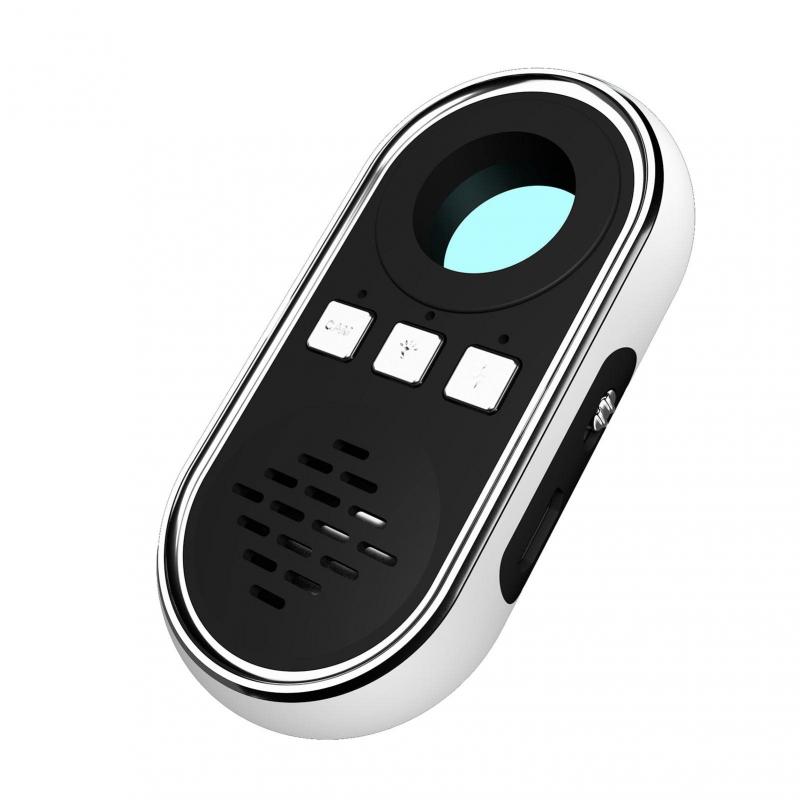
The scanning probe microscope (SPM) is a type of microscope that uses a physical probe to scan the surface of a sample to create an image with high resolution. The principle of operation of SPM is based on the interaction between the probe and the sample surface. The probe is brought into close proximity with the sample surface, and the interaction between the probe and the sample surface is measured. The probe is then moved across the surface of the sample, and the interaction is measured at each point. The data collected is used to create an image of the sample surface.
There are several types of SPM, including atomic force microscopy (AFM), scanning tunneling microscopy (STM), and magnetic force microscopy (MFM). Each type of SPM uses a different type of probe and measures a different type of interaction between the probe and the sample surface.
In AFM, the probe is a cantilever with a sharp tip at the end. The tip is brought into close proximity with the sample surface, and the interaction between the tip and the sample surface causes the cantilever to bend. The bending of the cantilever is measured and used to create an image of the sample surface.
In STM, the probe is a sharp tip that is brought into close proximity with the sample surface. A voltage is applied between the tip and the sample surface, and the current that flows between the tip and the sample surface is measured. The current is used to create an image of the sample surface.
In MFM, the probe is a magnetic tip that is brought into close proximity with the sample surface. The magnetic interaction between the tip and the sample surface is measured, and the data is used to create an image of the sample surface.
The latest point of view in SPM is the development of new probes and techniques that allow for even higher resolution imaging. Researchers are also exploring new applications for SPM, including the study of biological systems and the development of new materials.
2、 Types of scanning probe microscopes

Scanning probe microscopes (SPMs) are a class of instruments that allow for the imaging and manipulation of surfaces at the nanoscale. These microscopes work by scanning a sharp probe over the surface of a sample, measuring the interaction between the probe and the surface, and using this information to create an image of the surface topography.
There are several types of scanning probe microscopes, including atomic force microscopes (AFMs), scanning tunneling microscopes (STMs), and magnetic force microscopes (MFMs). Each of these microscopes operates on a different principle, but they all rely on the same basic concept of scanning a probe over a surface and measuring the interaction between the probe and the surface.
AFMs use a sharp probe with a small cantilever to measure the forces between the probe and the surface. As the probe is scanned over the surface, the cantilever deflects in response to the forces between the probe and the surface. This deflection is measured and used to create an image of the surface topography.
STMs, on the other hand, use a sharp probe to measure the tunneling current between the probe and the surface. As the probe is scanned over the surface, the tunneling current changes in response to the distance between the probe and the surface. This change in current is measured and used to create an image of the surface topography.
MFMs use a magnetic probe to measure the magnetic forces between the probe and the surface. As the probe is scanned over the surface, the magnetic forces change in response to the magnetic properties of the surface. This change in force is measured and used to create an image of the surface topography.
The latest point of view on scanning probe microscopes is that they have revolutionized the field of nanotechnology by allowing scientists to study and manipulate materials at the atomic and molecular level. These microscopes have applications in a wide range of fields, including materials science, biology, and electronics. As technology continues to advance, it is likely that new types of scanning probe microscopes will be developed, further expanding our ability to study and manipulate the nanoscale world.
3、 Components of a scanning probe microscope

How does a scanning probe microscope work?
A scanning probe microscope (SPM) is a type of microscope that uses a physical probe to scan the surface of a sample to create an image with high resolution. The probe is typically a sharp tip made of a conductive material, such as tungsten or platinum, that is attached to a cantilever. The cantilever is then moved across the surface of the sample, and the interaction between the probe and the sample is measured to create an image.
There are several types of SPMs, including atomic force microscopes (AFMs), scanning tunneling microscopes (STMs), and magnetic force microscopes (MFMs). Each type of SPM works slightly differently, but they all rely on the same basic principle of using a probe to scan the surface of a sample.
Components of a scanning probe microscope:
1. Probe: The probe is the most important component of an SPM. It is typically a sharp tip made of a conductive material, such as tungsten or platinum, that is attached to a cantilever.
2. Cantilever: The cantilever is a thin, flexible beam that supports the probe. It is typically made of silicon or another material with similar properties.
3. Piezoelectric scanner: The piezoelectric scanner is used to move the cantilever across the surface of the sample. It consists of a stack of piezoelectric crystals that expand or contract in response to an electric field.
4. Feedback system: The feedback system is used to maintain a constant distance between the probe and the sample. It measures the interaction between the probe and the sample and adjusts the position of the piezoelectric scanner to keep the distance constant.
5. Computer: The computer is used to control the movement of the piezoelectric scanner and to process the data collected by the feedback system. It is also used to create images of the sample based on the data collected by the probe.
The latest point of view on SPMs is that they have revolutionized the field of nanotechnology by allowing scientists to study and manipulate materials at the atomic and molecular level. They have applications in a wide range of fields, including materials science, biology, and electronics. As technology continues to advance, it is likely that SPMs will become even more powerful and versatile, opening up new possibilities for scientific research and technological innovation.
4、 Imaging modes

How does a scanning probe microscope work? Scanning probe microscopes (SPMs) are a type of microscope that use a physical probe to scan the surface of a sample and create an image with high resolution. The probe interacts with the sample surface, and the resulting data is used to create an image of the surface topography.
There are several imaging modes used in scanning probe microscopy, including atomic force microscopy (AFM), scanning tunneling microscopy (STM), and magnetic force microscopy (MFM). In AFM, a small cantilever with a sharp tip is used to scan the surface of the sample. The tip is brought close to the surface, and the interaction between the tip and the sample surface causes the cantilever to deflect. This deflection is measured and used to create an image of the surface topography.
In STM, a sharp tip is brought very close to the surface of the sample, and a voltage is applied between the tip and the sample. Electrons tunnel between the tip and the sample, and the resulting current is measured and used to create an image of the surface topography.
MFM uses a magnetic tip to scan the surface of the sample. The tip is brought close to the surface, and the interaction between the tip and the magnetic field of the sample is measured and used to create an image of the surface topography.
The latest point of view in scanning probe microscopy is the development of new techniques that allow for the imaging of biological samples in their native environment. This includes the use of liquid environments and the development of new probes that are more sensitive to biological samples. These advances are allowing researchers to study biological systems at the nanoscale, which has important implications for understanding disease and developing new treatments.


















